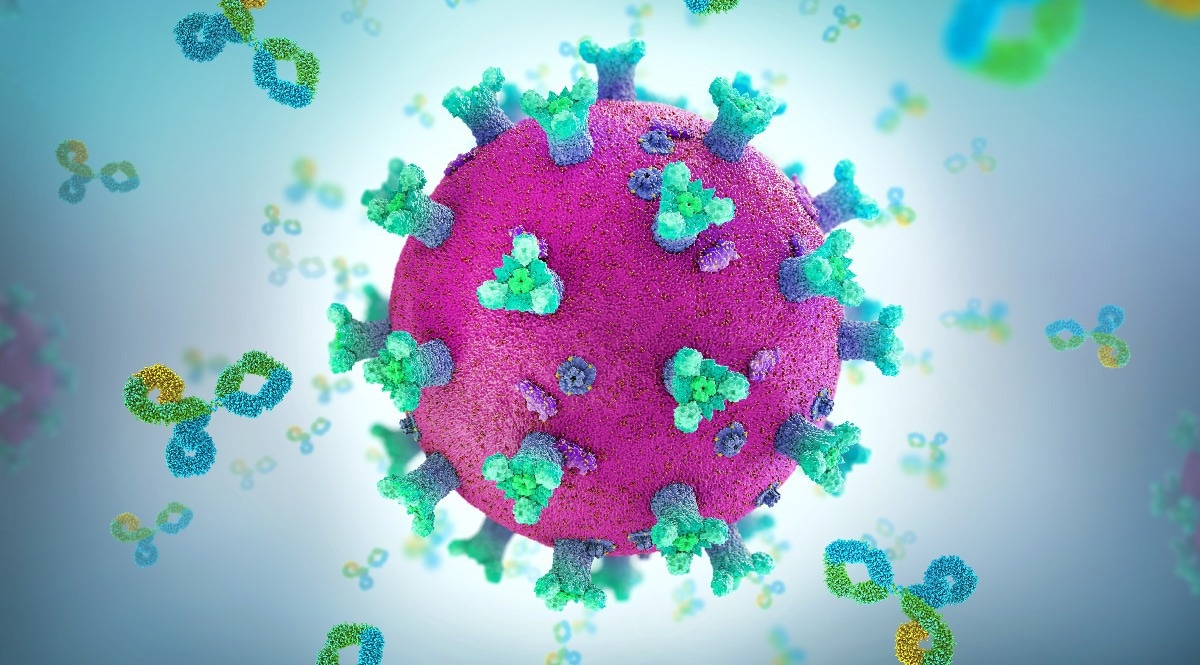In a recent study posted to the medRxiv* preprint server, researchers evaluated neutralizing antibody (nAb) responses against the severe acute respiratory syndrome coronavirus 2 (SARS-CoV-2) Omicron variant induced by booster vaccination (third dose) with Pfizer-BioNTech’s BNT162b2 messenger ribonucleic acid (mRNA) vaccine. They also assessed the association between serological nAb titers, risk of breakthrough infections, and coronavirus disease 2019 (COVID-19) symptomatology.

Studies have reported that two doses of COVID-19 vaccines (prime vaccination) have conferred immune protection against SARS-CoV-2 variants of concern (VOC); however, the vaccination-induced serological immunity has been reported to wane with time. The continual emergence of SARS-CoV-2 VOCs such as Omicron with greater immune-evasiveness and transmissibility coupled with the eventual waning of immunity has warranted booster vaccinations.
However, data on the association between vaccine-induced immune responses, infection risks, and associated symptoms during the Omicron wave are limited. The authors of the present study previously analyzed NCGM (national center for global health and medicine) staff members of a tertiary hospital in Tokyo who responded to the fourth survey of a case-control study conducted by NCGM in December 2021.
About the study
In the present study, researchers assessed humoral responses to booster vaccinations against Omicron, the risk of breakthrough infections, and associated symptoms during the period of Omicron predominance, i.e., between January and March 2022 among the fifth survey (follow-up) respondents of the previous NCGM study.
The pre-infection anti-Omicron nucleocapsid (N) protein and spike (S) protein immunoglobulin G (IgG) titers were determined and compared among individuals with breakthrough infections (cases) and those without (controls). In-house BNT162b2 vaccinations were administered between March and June 2021 for prime vaccination and between December 2021 and February 2022 for booster vaccination.
The booster vaccine effectiveness (VE) was compared to the second COVID-19 vaccination. The study outcome was PCR (polymerase chain reaction)- or SARS-CoV-2 antigen-confirmed COVID-19 diagnosis, documented in the NCGM in-house registry. The 50% neutralization titer (NT50) values were determined by quantifying serological reductions of CPE (cytopathic effect) of SARS-CoV-2 strains such as the Wuhan-Hu-1 wild-type (wt) strain, Omicron BA.1 VOC, and Omicron BA.2 VOC in VeroE6-TMPRSS2 cells.
To detect COVID-19-associated symptoms such as high fever, severe fatigue, dyspnea, smell and taste disorders, and sore throat among breakthrough infection cases, self-reported data were obtained using questionnaires.
Results
Out of 1,578 initially selected individuals, 30 individuals who received <2 vaccinations at baseline, 49 individuals were administered non-mRNA-based SARS-CoV-2 vaccines, 21 individuals with prior COVID-19 history, and detectable nAbs against the SARS-CoV-2 nucleocapsid (N) protein were excluded from the analysis. As a result, 1,456 individuals were considered for the final analysis.
The incidence rates of breakthrough SARS-CoV-2 infections during Omicron predominance were lower among booster-vaccinated individuals (within three months following vaccination) than prime-vaccinated individuals (within 11 months following vaccination).
Breakthrough SARS-CoV-2 infections were reported in four percent (n=60) of the final sample population between 1 January and 9 March 2022, of which 55% (33 cases) of infections were caused due to Omicron and 22 cases were detected among boosted individuals. The booster VE against SARS-CoV-2 infections concerning the prime vaccination was 55%.
Among the boosted individuals, there were no significant differences in pre-infection anti-Omicron nAb and anti-Omicron S titers between the two groups. In the case group, nAb titers against Omicron BA.1 and Omicron BA.2 were 3.3-fold and 7.2-fold lower than those against SARS-CoV-2 wt, respectively; those against Omicron BA.2 were 2.2-fold lower than those against Omicron BA.1.
Concerning symptoms experienced during SARS-CoV-2 infections, patients identified from the in-house registry were either asymptomatic (17%, n=10) or had mild symptoms (83%, n=50), and three patients with mild symptoms (six percent) required hospitalization. The proportion of asymptomatic patients was higher among booster-vaccinated individuals (20%) than prime-vaccinated individuals (seven percent).
Among the case group, individuals who developed COVID-19 symptoms had lower pre-infection anti-Omicron BA.1 and BA.2 nAb titers than asymptomatic individuals. In particular, those who experienced common cold-like symptoms had significantly lesser pre-infection nAb titers against Omicron BA.1. High fever was significantly associated with lower NAb titers against Omicron BA.2 and smell or taste loss was associated with lower Omicron BA.1 titers.
Overall, the study findings showed that the booster BNT162b2 vaccinations were effective in reducing SARS-CoV-2 infection risks during Omicron predominance in comparison to prime vaccinations. Greater pre-infection nAb titers may not correlate with lower Omicron infection risks among boosted individuals; however, they may have an inverse association with the number of COVID-19 symptoms.
*Important notice
medRxiv publishes preliminary scientific reports that are not peer-reviewed and, therefore, should not be regarded as conclusive, guide clinical practice/health-related behavior, or treated as established information.
- Shohei Yamamoto et al. (2022). Neutralizing antibodies following three doses of BNT162b2 vaccine, breakthrough infection, and symptoms during the Omicron predominant wave. medRxiv. doi: https://doi.org/10.1101/2022.09.15.22280009 https://www.medrxiv.org/content/10.1101/2022.09.15.22280009v1
Posted in: Medical Science News | Medical Research News | Disease/Infection News
Tags: Antibody, Antigen, Cold, Common Cold, Coronavirus, Coronavirus Disease COVID-19, covid-19, Dyspnea, Fatigue, Fever, Global Health, Hospital, immunity, Immunoglobulin, Medicine, Omicron, Polymerase, Polymerase Chain Reaction, Protein, Respiratory, Ribonucleic Acid, SARS, SARS-CoV-2, Severe Acute Respiratory, Severe Acute Respiratory Syndrome, Sore Throat, Syndrome, Throat, Vaccine

Written by
Pooja Toshniwal Paharia
Dr. based clinical-radiological diagnosis and management of oral lesions and conditions and associated maxillofacial disorders.
Source: Read Full Article
